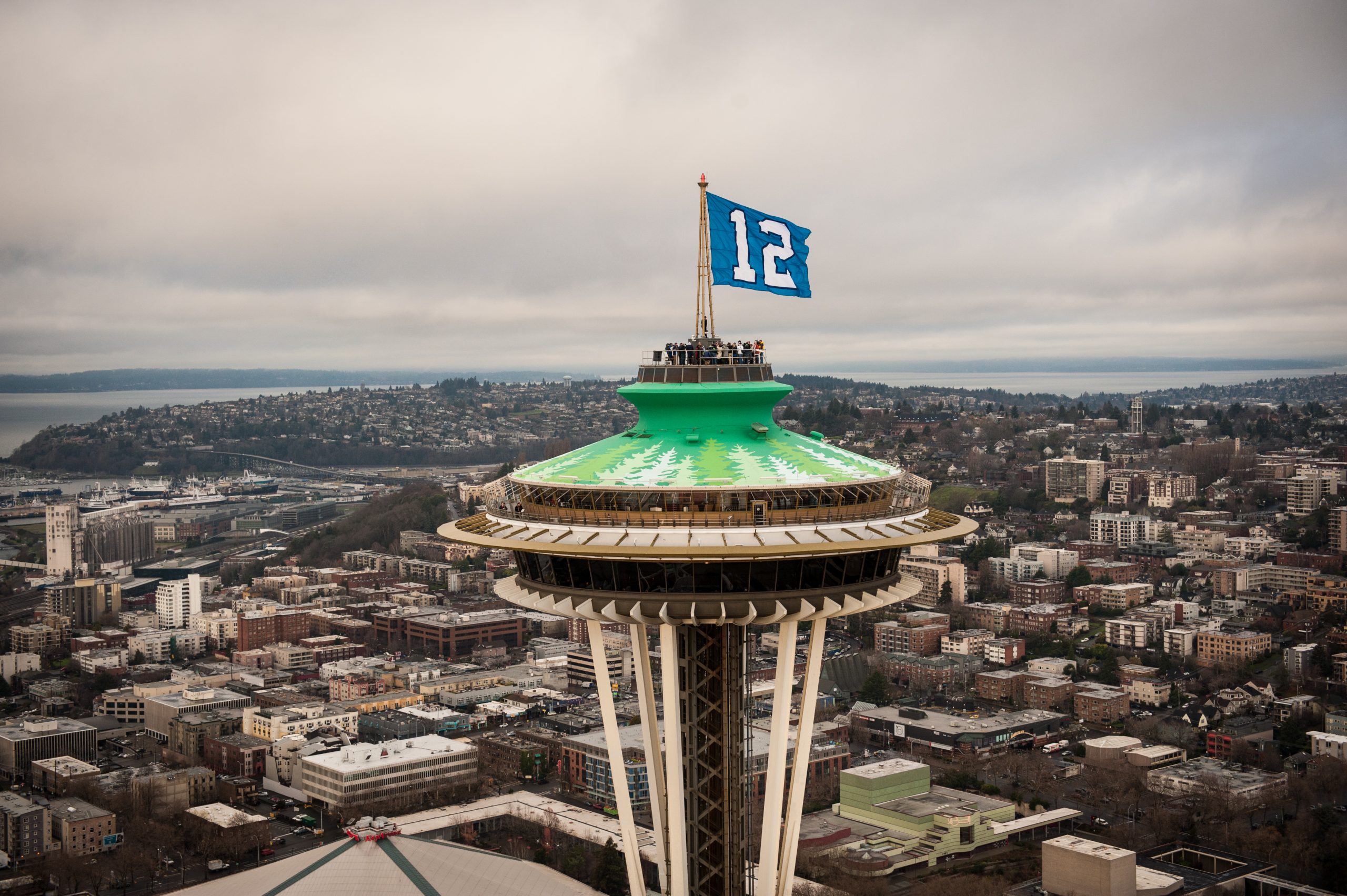Bevell has dabbled with it in the last two games, in a way that reminds me of the way he dabbled with the read-option against Carolina. That scheme emerged more and more over the past few weeks as the team got more comfortable with it. The same may be happening with the screen game. Take a look at the two very different approaches the Seahawks took with the screen pass in the Jets and Vikings game. First, we will explore the play against the Jets.
Click any image to zoom
2nd & 10 @ NYJ 47 with 5:11 left in the 2nd quarter
Marshawn Lynch leaks out to the left, and Wilson scans the field, looking like he is going to throw to a receiver. Doug Baldwin is open underneath, and it is possible Wilson had the option to throw there. Two lineman are already leaking out the left with Lynch, so there is no doubt the screen is a designed play. The only question is whether it was the primary read for Wilson. This is different than the classic screen where the quarterback is back-pedaling in the hopes of baiting the lineman deep into the back-field before he throws it over their heads. The receiver, I believe to be Golden Tate, is running his man off the play deep down-field, leaving a gaping hole on the left side.
Lynch is finally tackled by Cromartie at the 21, after a 26-yard gain.
Now, look at the inside screen run in the Vikings game.
2nd & 10 @ SEA 37 with 11:12 left in the 4th quarter
Seattle lines up with 2 tight ends, 2 WRs, and 1 RB. Golden Tate comes in motion toward the line. The two tight ends are on the left side off the formation, which draws two of the Vikings eight defenders in the box that side of the formation. The Vikings are geared up for the run.
Wilson has yielded some ground and got the ball out to Lynch, with what now is three lineman in front of him. There is one Viking defender on his side of the field within 20 yards of him. Unlucky for that guy. Tate has effectively pulled his defender away from the play with his crossing pattern.
Breno Giacomini eliminates the nearest threat, and Lynch is off to the races. He ends up running all the way back across the field for a 23-yard gain.
Closing Thoughts
Two plays in two weeks does not a trend make, but this has not been part of the offensive approach for a number of years, so it stands out. The fact that both plays were extremely effective would make most coaches explore it further. These are timing plays, and require a lot of repetition. Even if they are only a minor part of the offense, the threat of these sorts of plays will give defensive coordinators headaches. Seattle ran one from a passing formation and one from a running formation. Players have enough trouble tackling Lynch when he runs right into them. Tackling him with 2-3 lineman acting as body guards is nearly impossible. Keep an eye out to see how this evolves over the rest of the season.

.png)
.png)
.png)
.png)
.png)
.png)
.png)
.png)
.png)
.png)
.png)
.png)